U.S. Governors Address Water
State of the State speeches highlight water resources
President Barack Obama did not directly mention water in the State of the Union speech on Tuesday night. References to climate change were the closest he came.
But governors, in their State of the State addresses, are not as circumspect. Because water is managed primarily at the state and local level, state leaders often have an ardent interest in the topic — this year perhaps even more than usual. A potentially precedent-setting Clean Water Act lawsuit in Iowa filed a year ago forced state officials to look for new approaches to farm pollution. Drought in the American West prompted a reexamination of state water policies. And the slow draining of the Ogallala Aquifer, lifeblood of the Great Plains, continues to weigh on Kansas.
Around one-third of governors have delivered their speeches. More will follow in the next few weeks, including Michigan Governor Rick Snyder’s address on January 19, in which he is expected to discuss the Flint lead contamination crisis.
Below are summaries of the governors’ remarks and the text of their speeches. (This post will be updated as new speeches are delivered.)
Hawaii
Like Alaska, Hawaii is a state whose resource economy is in transition. Alaska faces declining oil revenue and Hawaii learned earlier this month that the state’s last commercial sugar plantation will close at the end of the year.
Gov. David Ige (D) said that the end of sugar presents an opportunity.
“Here is the fundamental question,” he said. “In the future when we look upward to central Maui, will we see green productive farmlands, a fallow dust bowl or more homes for the super wealthy?”
Ige said he will work with Alexander and Baldwin, the sugar company, to keep the lands in agriculture.
“This is a long-term top agenda item for everyone who loves what Hawaii stands for and where we came from as a people,” he said.
Environmental groups may wish for a different outcome for the water used on those lands. Water diversions to supply sugar plantations, each though the plantations may have ceased operating, affect 90 percent of Maui’s streams. A restoration project in 2014 returned water to ‘Iao and Waikapu streams.
Alaska
With oil prices in free fall, the top concern in Alaska is the budget, which is funded primarily through oil taxes. Gov. Bill Walker (I) proposed a three-step approach to close the $US 3.5 billion deficit: reduce government spending, decrease the annual oil dividend given to every qualified resident, and install the state’s first income tax in 35 years.
As for water, Walker talked about an agreement signed in November with British Columbia to study the effect of Canadian mines on rivers that flow into Alaska.
“My administration has taken steps to address concerns about the potential for Canadian mines to pollute Alaska’s downstream waters,” Walker said. “British Columbia Premier Christy Clark and I agreed to establish a bilateral working group focused on protecting trans-boundary rivers. Lieutenant Governor Mallott will continue working with Alaska tribes and stakeholders, as well as leaders in British Columbia, to ensure that activities in Canada do not harm Alaska waters.”
Walker did not mention climate change, which is thawing the frozen North, potentially destabilizing Alaska’s infrastructure, and forcing some Alaska Native communities to abandon their coastal homes.
California
Gov. Jerry Brown (D), known as a spendthrift, talked about paying for “commitments already made” — that is, repairing old roads, bridges, and levees, educating the state’s citizens, and securing $US 220 billion in promised retirement benefits.
With the drought still a prominent topic, Brown also reiterated the importance of water. The passage of a $US 7.5 billion water bond in 2014, he said, was “a bright spot in our contentious politics.” He listed a number of actions that will be required to ensure California’s water security: recharge aquifers, manage groundwater, recycle wastewater, capture stormwater, build storage and reliable conveyance, improve efficiency, invest in new technologies, including desalination.
Storage and conveyance — whether to build new dams and a $US 15 billion tunnel system beneath the Sacramento-San Joaquin Delta — will be two of the most heavily debated topics in Brown’s remaining three years in office.
One of the bright spots in our contentious politics is the joining together of both parties and the people themselves to secure passage of Proposition 1, the Water Bond. That, together with our California Water Action Plan, establishes a solid program to deal with the drought and the longer-term challenge of using our water wisely. Our goal must be to preserve California’s natural beauty and ensure a vibrant economy — on our farms, in our cities and for all the people who live here. There is no magic bullet but a series of actions must be taken. We have to recharge our aquifers, manage the groundwater, recycle, capture stormwater, build storage and reliable conveyance, improve efficiency everywhere, invest in new technologies — including desalination — and all the while recognize that there are some limits.
Achieving balance between all the conflicting interests is not easy but I pledge to you that I will listen and work patiently to achieve results that will stand the test of time. Water goes to the heart of what California is and what it has been over centuries. Pitting fish against farmer misses the point and grossly distorts reality. Every one of us and every creature that dwells here form a complex system which must be understood and respected.
Besides the immediacy of the drought, there is the overarching threat of a warming climate. Incredibly — though last year was the hottest on record — there are still those, particularly in Washington, who are in denial. But even the deniers can’t deny the carbon pollution that exists all over the world. It is causing serious injury and respiratory disease to people of all ages, but especially the young and very old.
Thankfully the rest of the world has heard the message: Humankind must change its ways and radically decarbonize the economy.
The Paris climate agreement was a breakthrough and California was there leading the way. Over 100 states, provinces and regions have now signed on to our Under 2 MOU. The goal is to bring per capita greenhouse gases down to two tons per person. This will take decades and vast innovation. But with SB 350, we’re on our way.
Finally, we know that in life, disasters happen. Fires, floods, earthquakes — they will occur and we must be prepared to respond. That too — by the way — requires that we save and maintain a solid reserve.
Michigan
“Tonight will be a different State of the State,” Gov. Rick Snyder said in front of a supportive, occasionally boisterous audience. Typically a formulaic, ceremonial listing of accomplishments and goals, Snyder’s State of the State speech morphed into an exercise in damage control after the governor found himself at the center of a controversy over lead contamination in Flint’s drinking water.
Snyder spent nearly half his speech — 20 minutes — speaking about Flint and the embarrassing condition of Michigan’s infrastructure. He apologized to the residents of Flint and promised to fix the problems, all while defending his administration’s response to the water crisis.
“There can be no excuse,” Snyder said. “When Michiganders turn on the tap, they expect and they deserve clean, safe water. It is that simple. It is that straightforward. So that is what we will deliver.”
Snyder requested more resources from the Legislature: $US 28 million to provide bottled water, filters, and testing equipment; medical treatment, health care, and an infrastructure study.
Snyder, a Republican, was given a standing ovation at least four times while speaking about Flint. Both chambers of the Michigan Legislature have Republican majorities.
From Flint, Snyder transitioned to a broader discussion of infrastructure. Michigan has a “hidden problem,” he said, referring to the maze of old pipes that transport drinking water, sewage, and gas.
“It’s out of sight, out of mind — until we have water problems, or power goes out, or sewer backs up from a flood, or freeways flood because the pumps don’t work,” Snyder remarked. “Lead pipes, aging natural gas infrastructure, wastewater overflows, energy reliability, ports needing emergency dredging, Line 5 underneath the Great Lakes, even the Soo Locks. We need to have better solutions.” Snyder did not mention the oil spill into the Kalamazoo River in 2010 from an Enbridge pipeline.
To find those solutions, Snyder announced a Commission for Building 21st Century Infrastructure, which will report to the governor by September on how to modernize the state’s bridges, roads, water pipes, ports, and energy grid.
Highlights of Snyder’s speech are below. Here is the full text of Snyder’s Flint remarks.
To begin, I’d like to address the people of Flint. Your families face a crisis — a crisis you did not create and could not have prevented. I want to speak directly, honestly, and sincerely to let you know we are praying for you, we are working hard for you, and we are absolutely committed to taking the right steps to effectively solve this crisis.
To you, the people of Flint, I want to say tonight — as I have before — I am sorry and I will fix it.
No citizen of this great state should endure this kind of catastrophe. Government failed you — federal, state, and local leaders — by breaking the trust you placed in us.
I’m sorry most of all that I let you down.
You deserve better. You deserve accountability. You deserve to know that the buck stops here, with me. Most of all, you deserve to know the truth and I have a responsibility to tell you the truth. The truth about what we’ve done and what we’ll do to overcome this challenge.
Tomorrow I will release my 2014 and 2015 emails regarding Flint to you, the citizens, so that you have answers to your questions about what we’ve done and what we’re doing to make this right for the families of Flint. Anyone will be able to read this information for themselves at Michigan.gov/Snyder.
Because the most important thing we can do right now is to work hard and work together for the people of Flint. I know apologies won’t make up for the mistakes that were made — nothing will. But, I take full responsibility to fix the problem so that it never happens again. Let me tell you what we’ve done so far, and what we will be doing in the coming days, weeks, months, and years to keep our commitment to you. To make Flint an even cleaner, safer, stronger city than it was before. Because that’s what you and your families deserve.
We are working to do whatever we must until this crisis is resolved. The people of Flint have chosen a new mayor. And I personally commit to work hand in hand with Mayor Weaver so we can rebuild the trust that’s been broken.
I have already taken steps to bring new leadership to the DEQ — these are individuals who understand the severity of the problem and who will effectively communicate to the people of our state.
For those whose mistakes contributed to this disaster, we are fully cooperating with investigations and will hold those individuals accountable. And let me be perfectly clear to all of state government. In the future, a situation like this must come to my desk immediately. No delays. No excuses. Period.
We will provide resources to help anyone and everyone that is affected. Just as we’ve provided since we first knew of this crisis.
In addition to emails, tonight I’m releasing a comprehensive timeline of the steps we’ve taken and the actions underway to solve this crisis…
There can be no excuse. When Michiganders turn on the tap, they expect and they deserve clean, safe water. It is that simple. It is that straightforward. So that is what we will deliver.
To the families in Flint. It is my responsibility, my commitment to deliver. I give you my commitment that Michigan will not let you down.
Arizona
Gov. Doug Ducey (R) drew a contrast between California’s drought emergency and Arizona’s forward-thinking water policies that helped keep hydrological deprivation at bay. The reality is a bit more complex. Yes, Arizona passed a groundwater act more than three decades ago that was ahead of its time. And the state does store surplus Colorado River water underground, in case of a shortage. But outside the designated groundwater management areas, aquifers are largely unregulated. Streamflows and water tables have dropped in the state’s southeast corner.
In his speech, Ducey also promoted a “water augmentation council” that he appointed in December to investigate new sources of water. Brackish groundwater is expected to be an option when the council’s report is filed July 1.
“It’s often misreported that there is a “Western Water Crisis,” but the facts show, we’d be more accurate to call it a “California Water Crisis.”
We’ve planned ahead.
If there’s one thing Arizona is best in the nation at — it’s water. We sit in the Capitol city in one of the largest metropolitan areas in the nation in the middle of a desert.
Thanks to revolutionary planning efforts like our 1980 Groundwater Management Act, and leaders from Carl Hayden to Mo Udall to Jon Kyl, Arizona has grown and thrived.
We’re building on that, and we have a plan in motion. Right now, a team of our top water experts, users and providers are charting the path forward.
I’ve directed them to:
- Investigate new, long-term sources for water in our state.
- Explore additional conservation opportunities.
- And identify future infrastructure needs so we don’t end up like sorry California.
I’ve also given the green light to the Arizona Department of Water Resources to use existing dollars to hire new staff that the water community has been requesting for years — experts who can take these plans and make them work.”
Colorado
After approving the state’s first water plan in November, Gov. John Hickenlooper (D) turned in his speech to implementation. He also spoke about developing a mine-drainage inventory in the wake of the Gold King mine spill of last August.
“We now have a comprehensive, statewide Water Plan — the result of unprecedented engagement with over 30,000 people around the state. It’s anchored in conservation and powered by innovative solutions to make our water go further, protect our natural environment, and ensure our agriculture and recreation industries keep flourishing.
Now it’s time to implement these solutions.
We will work with you to craft legislation that gives the Colorado Water Conservation Board greater flexibility in funding our most important water projects…
When we recognize a threat to our natural environment, we need to take action. Last summer’s Gold King Mine spill showed us what can happen when abandoned mines with environmental or safety issues are not properly remediated.
To reduce the risk of another release like Gold King, we are developing a statewide inventory of draining mines to prioritize for clean-up.
Tackling watershed contamination presents a challenge because of federal laws that prevent clean-up efforts that fail to meet anything less than their standards.
We ask that you support our Congressional Delegation’s efforts to allow “Good Samaritans” like state agencies, local governments, watershed groups and nonprofits to improve water quality without incurring liability for meeting all federal standards.
Upholding the highest public health and environmental standards, while promoting innovative energy development, is a cornerstone of our energy strategy.
At our altitude, we know better than anyone how important clean air is — and we need to protect it, along with our land and water. That means moving toward a cleaner, more sustainable energy future that is as reliable as what we have now.”
Idaho
Gov. Butch Otter (R) praised a water-sharing agreement signed by farmers who irrigate with groundwater from the Eastern Snake Plain Aquifer, a declining resource. Groundwater users agreed to cut withdrawals by more than 10 percent.
“I’m sure you will agree that sustainability is a significant goal and a key metric of success for much of our public policy, including our management of Idaho’s precious water resources.
Mr. Speaker, Senator Bair and Chairman Chase of the Idaho Water Resource Board, I want to personally thank you for your efforts in bringing two water-user groups together to finally settle delivery calls from the Eastern Snake Plain Aquifer.
This historic settlement between the Surface Water Coalition and groundwater users will help ensure that the aquifer is a healthy and reliable resource now and well into the future. In fact, I would encourage others who are at odds over apportioning scarce resources to use this agreement as a template for addressing their own conflicts.
Sustainability is a central value throughout Idaho, from the Treasure Valley to the Rathdrum Prairie and from Bear Lake to Hells Canyon. That’s why I’m proud to announce that the Water Resource Board has drafted a statewide sustainability policy. The Board will conduct public meetings throughout Idaho in the coming year to gather suggestions on incorporating its findings into our Comprehensive State Water Plan.
Preserving and protecting Idaho’s water is crucial to our continued economic growth and increased prosperity. Our renewable and “green” hydroelectric resources alone make Idaho the envy of other states in the West and a magnet for businesses that put a premium on environmental sustainability.”
Iowa
Gov. Terry Branstad (R) talked at length about water pollution. A lawsuit by Des Moines Water Works, the capital city’s utility, against three upstream farm counties over nitrate pollution has roiled the state. The perception is of a rural-urban divide: farms whose polluted runoff is lightly regulated versus city slickers who must pay to clean up the mess.
Branstad is supporting an alternative path. In the speech, he touted a water investment plan that he introduced last week alongside U.S. Agriculture Secretary Tom Vilsack. By extending a one-cent sales tax, the state could raise $US 4.7 billion over 32 years to fund projects to reduce water pollution. The state’s prosperity depends on it, he argued.
“This is a monumental investment in both education funding and water quality and does it without raising taxes.
From our rich soil to abundant water, Iowans are blessed with resources that are the envy of the world.
Over the years, positive steps have been taken to improve our state’s water quality–including our innovative nutrient reduction strategy.
However, it is clear we need a stable long-term source of funding to more significantly improve water quality from both point and non-point sources of pollution.
Unfortunately, the issue of protecting our state’s water quality risks tearing apart the fabric of Iowa, pitting Des Moines against rural Iowa.
Simply put, we must significantly accelerate our water quality efforts in order to avoid eroding our path to prosperity.”
Kansas
More than two years ago, Gov. Sam Brownback, returning home after two full terms in the U.S. Senate, called for Kansas officials to develop a 50-year water vision. The western third of the state relies on the declining Ogallala Aquifer to sustain its farm economy, while reservoirs in the eastern half are filling with sediment, cutting their capacity.
Brown used his State of the State speech to highlight some of the water successes during his tenure. But despite widespread acclaim for the locally driven conservative plans he championed, few districts have endorsed them.
“One of the biggest challenges we face in much of Kansas is the future of our water.
One of my passions as Governor is to prepare the state to be in a better position for the future. To do that we’ve got to prepare today and in some cases we have to sacrifice some now so our kids and grandkids have better options.
The work we have accomplished to preserve and extend water resources in Kansas in the last three years has been significant.
The first Local Enhanced Management Area has been in operation for three years in 99 square miles of Northwest Kansas. They have reduced their water use by roughly 20 percent, and maintained their net income. That should extend the useful life of the Ogallala in that area by 25 years.
That is solid progress but more needs to happen.
We are, right now, dredging John Redmond Reservoir, the first federal reservoir to be dredged in the nation.
Whether it’s dredging projects or reducing our demands on the Ogallala, it’s going to take time and some sacrifice.
We are going to continue implementing action items in the Long Term Vision for Kansas Water.
With most natural resources, we aren’t just taking them to use for today. We are borrowing them from the future.
Perhaps no one individual has done more to protect our water than the recipient of the first Water Legacy Award.
Wayne Bossert was the long-time director of Groundwater Management District #4. Now retired, he led the organization at the time it formed the state’s first LEMA in Thomas and Sheridan County, to help preserve the aquifer.”
New York
Gov. Andrew Cuomo (D) proposed $US 250 million to help local communities rebuild water and sewer systems.
“It’s not fancy but it’s necessary,” he said.
West Virginia
Gov. Earl Ray Tomblin (D) did not mention the state’s lawsuit to block the Obama administration’s Clean Water Rule, which would better define which waterways are regulated under the Clean Water Act. He also did not bring up the chemical spill that shut down drinking water for 300,000 people in the state capital in 2014.
Tomblin did speak about coal. He acknowledged that the industry is on the decline, and that West Virginia must adapt. Funding, he argued, should come in part from the federal government, which owes the state a debt for the energy that powered the nation.
“We cannot ignore the unprecedented shift that has taken place in our state and our nation. Forces beyond our control have severely damaged our coal industry, and even the most optimistic among us realize it is unlikely coal will ever reach production levels of the past.
For generations, our miners unearthed the coal used to produce the low-cost energy that fueled this country’s Industrial Revolution — one that remains unmatched anywhere in the world. This nation owes these West Virginians a debt of gratitude and we are ready to cash in on that substantial IOU.
This fall, we submitted an application to the National Disaster Resilience Competition seeking more than $140 million in funding from the United States Department of Housing and Urban Development. This competition has the potential to help six counties in our southern coalfields adjust, adapt and advance their communities.
If we’re successful, these federal funds will help us rebuild aging infrastructure, promote land use planning and hazard reduction efforts and stimulate housing and economic development in areas outside of the region’s floodplains.”
Brett writes about agriculture, energy, infrastructure, and the politics and economics of water in the United States. He also writes the Federal Water Tap, Circle of Blue’s weekly digest of U.S. government water news. He is the winner of two Society of Environmental Journalists reporting awards, one of the top honors in American environmental journalism: first place for explanatory reporting for a series on septic system pollution in the United States(2016) and third place for beat reporting in a small market (2014). He received the Sierra Club’s Distinguished Service Award in 2018. Brett lives in Seattle, where he hikes the mountains and bakes pies. Contact Brett Walton

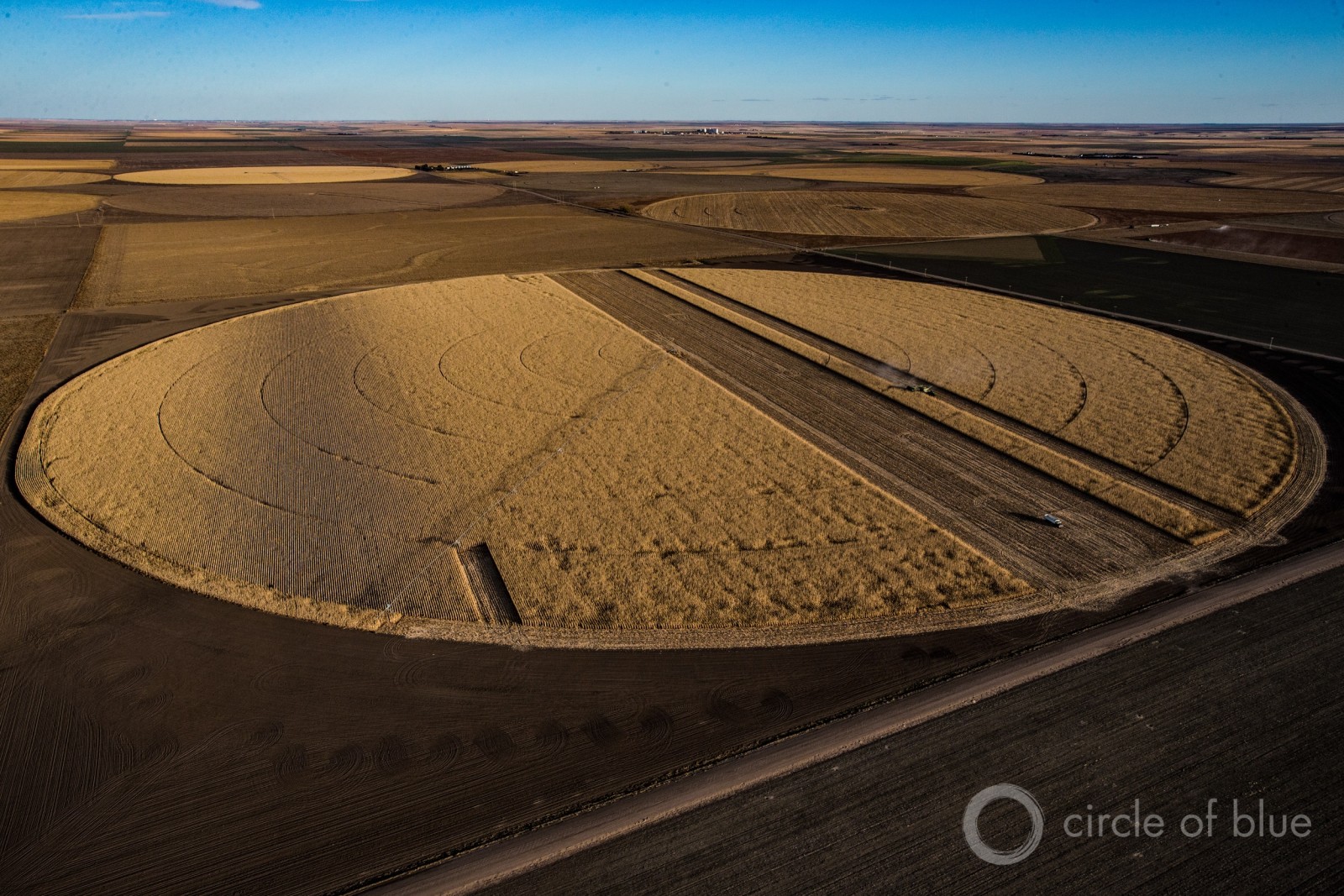



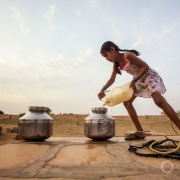
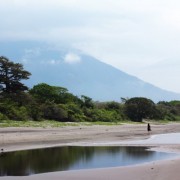
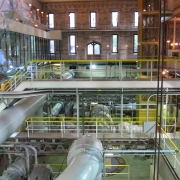
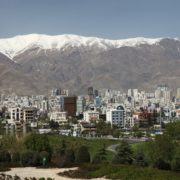



Leave a Reply
Want to join the discussion?Feel free to contribute!